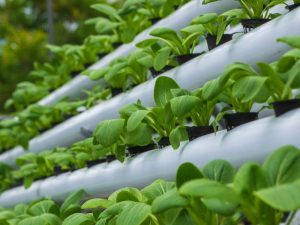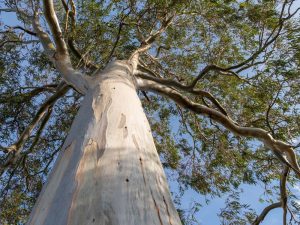Last Updated on June 16, 2025 by teamobn
There was a time when you’d only see them in a steaming bowl of Chinese noodle soup. Nowadays you are just as likely to see bok choy growing in backyard gardens.
Bok choy is a type of Chinese cabbage. Now considered a subspecies of Brassica rapa, this group was originally classified as its own species under the name Brassica chinensis by Carl Linnaeus.
The vegetable’s Chinese name, “pak choi,” literally means “white cabbage,” probably in reference to the plant’s blanched centers. Bok choy stalks are crisp, juicy, and delicious. The leaves are smooth and tender with a flavor akin to that of cabbage and chard.
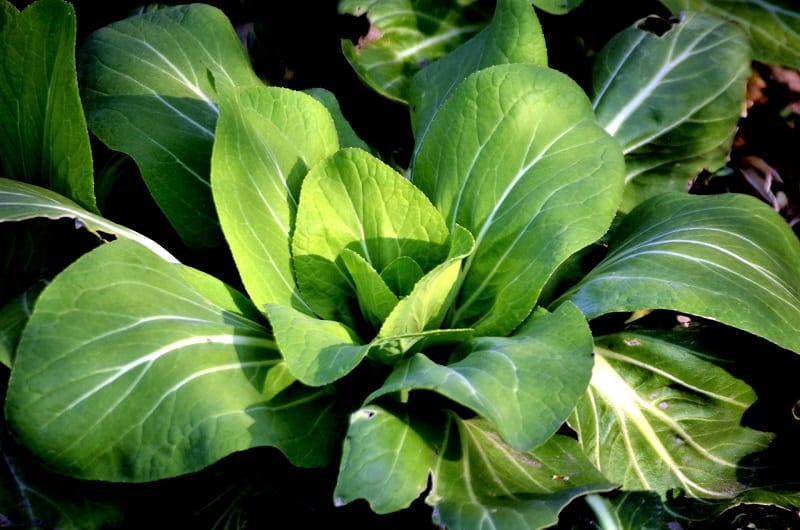
Growing Bok Choy from Seed
Contents
You can grow bok choy from seed starting in late August. Bok choy will grow well through the winter until April, but will bolt quickly when summer begins. If you live in a hot tropical climate, you can grow the vegetable in fall, winter, and early spring.
Bok choy can handle full sun, but it grows best under partial shade. The vegetable needs about 3 to 5 hours of sunlight each day and requires well-draining soil rich with organic matter. The plant prefers a pH from 6.0 to 7.5.
Here’s how to grow bok choy from seeds in your backyard.
Planting Bok Choy
Preparing the right soil and garden site is essential for growing bok choy successfully. Good groundwork sets the stage for healthy plants and abundant harvests.
Assessing Sunlight and Shade Requirements
Bok choy thrives under partial shade. Park it where morning sun hits for 3 to 5 hours each day and where afternoon shade protects tender leaves. Observing sun patterns in your yard helps decide the best plot.
Avoid spots that bake under midday sun. You can support growing bok choy between taller crops to filter harsh light. This approach balances warmth and protection so plants develop crisp, flavorful stalks without wilting in heat.
Testing Soil pH and Texture
Healthy bok choy needs loamy, fertile soil with a pH from 6.0 to 7.5. Begin by testing garden soil using a kit or lab service. Record results and adjust acidity with lime or sulfur to hit the ideal range.
Check texture by squeezing moist soil; it should hold shape but crumble at a gentle touch. Such soil drains well while retaining moisture. Mastering pH and texture is a key step in growing bok choy that yields tender, vigorous plants.
Incorporating Organic Matter
Rich organic matter fuels strong bok choy roots. Mix well-aged compost or shredded leaf mulch into the top 6 inches of soil before planting. Organic matter improves structure and water retention while supplying steady nutrients.
Worm castings or well-rotted manure add extra fertility. Blend materials evenly to avoid nutrient hot spots that can burn seedlings. Preparing the bed like this ensures even growth and supports vigorous leaf and stem development in every row.
Ensuring Proper Drainage
Soggy roots stunt bok choy growth and invite disease. Create gentle raised beds or rows to keep water moving away from crowns. If soil compacts easily or puddles form, add coarse sand or fine gravel to improve drainage.
Install shallow trenches between rows to channel excess moisture away. Dry soil pockets warm faster in spring and extend the season for growing bok choy. Managing water flow prevents root rot and supports healthy root systems.
Selecting Raised Beds vs. In-Ground Rows
Raised beds warm up faster in spring and drain better than in-ground rows. They also allow for deeper root zones when you fill them with custom soil blends. Choose in-ground rows if you have ample garden space and well-draining soil.
Both methods can suit backyard gardens. Ensure rows are no wider than 2 feet to reach the center for planting and weeding. Consider ease of access and soil control when choosing your bed style and add wheelbarrow-friendly paths for easier maintenance in warm months.
Implementing Crop Rotation Strategies
Rotating crops reduces pest and disease pressure in your bok choy patch. Avoid planting brassicas in the same spot for at least three seasons. Follow bok choy with legumes or roots that draw different nutrients and disrupt pest life cycles.
Mark rotation plans on a garden map to track past crops. This practice maintains soil health and keeps pests like cabbage worms at bay. Over time, rotation leads to more productive beds and healthier harvests.
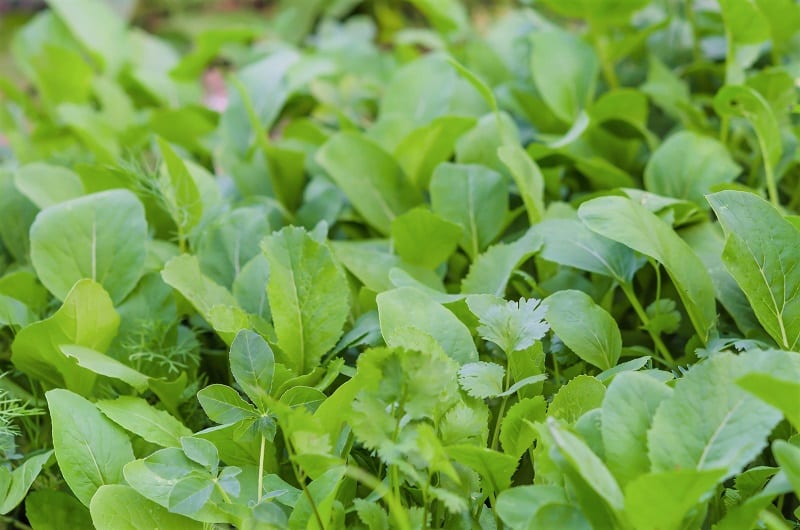
Tending to Your Bok Choy Crop
A healthy bok choy patch thrives with regular attention and simple care routines. Tending your crop daily keeps plants vigorous and yields generous harvests.
Quick Germination and Early Care
Bok choy sprouts in just four to eight days after sowing. You’ll see tiny cotyledons breaking through the soil surface. Keep newly planted beds moist but not waterlogged. Use a mist spray to avoid washing seeds away.
Check the soil twice daily. Warm stable soil temps between 45°F and 75°F speed germination. Avoid shading the bed completely. A little morning sun helps. This rapid start sets the stage for vigorous growth throughout the season.
Thinning Seedlings for Optimal Growth
Once seedlings reach two true leaves, thin carefully to reduce competition. Aim for 12 to 15 inches between plants. Use small scissors or pinch at soil level to avoid root damage. Transplant thinned seedlings elsewhere if desired.
Well-spaced plants develop thicker stems and larger leaves. Crowded crops bolt early. You’ll have an easier time watering and weeding. Good spacing prevents fungal issues and gives each plant room to thrive.
Watering Best Practices
Consistent moisture is key for bok choy. Water every morning to support steady growth. Aim to keep soil evenly damp. Deep infrequent watering encourages strong roots. A drip system or soaker hose works well.
Avoid overhead sprays after sunset because wet leaves invite disease. Mulch around plants to lock in moisture and suppress weeds. This routine prevents stress and supports crisp stalks you can harvest all season.
Managing Common Pests
Cabbage loopers, worms, and flea beetles love bok choy. Row covers are your first line of defense. Secure covers with soil or stakes to keep pests out. Inspect plants regularly for holes or frass. Snap off individual caterpillars you find.
Check undersides of leaves at dawn. Early action limits damage. Rotate crops each season to break pest cycles. You’ll find that proactive scouting makes growing bok choy easier and more rewarding.
Natural Pest Control Methods
Handpicking slugs and snails reduces crop losses. Drop them into soapy water to dispatch quickly. Encourage beneficial insects like ladybugs and lacewings. Plant marigolds and basil nearby to deter pests.
Apply diatomaceous earth around plant bases. This dry powder gently scrapes soft-bodied invaders. Neem oil spray can control many leaf-feeding insects. Use treatments in the evening to protect pollinators. Natural controls keep bok choy safe to eat and the environment healthy.
Monitoring for Disease and Nutrient Deficiencies
Bok choy resists many diseases but still needs watchful eyes. Yellowing leaves may signal nitrogen shortage. Hard distorted leaves can mean potassium imbalance. Test soil midseason and amend as needed. Remove any diseased foliage promptly.
Clean up plant debris each fall to stop overwintering pathogens. Keep air flowing by pruning crowded leaves. Regular checks help you catch small issues before they spiral. This vigilance ensures a robust harvest of crisp tender bok choy.
Weed Control and Maintenance
Weeds compete fiercely with bok choy for nutrients. Remove them by hand or use shallow cultivation. Keep hoe cuts under an inch deep to avoid root damage. Mulch helps block weed growth early.
Apply organic mulch after beds warm in spring. Renew the mulch layer every month as needed. Check for seedlings emerging through holes. A clean weed-free patch ensures every bok choy plant accesses water and nutrients. This care boosts yield and improves crop health.
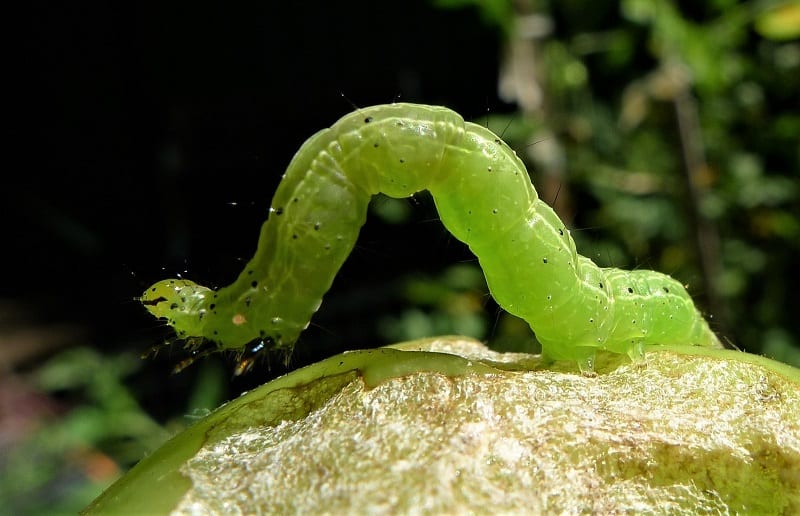
Harvesting Bok Choy
Knowing when and how to harvest bok choy preserves its sweet, crisp texture. Proper technique also primes plants for a smaller second crop later.
Determining Peak Ripeness
Bok choy reaches maturity in about two months from sowing. Check stalks when they form tight, glossy clusters. Leaves should look vibrant green and firm. Avoid letting the outer leaves yellow or wilt. Harvesting at peak ripeness ensures the sweetest flavor and best texture.
Using Clean Cutting Tools
Always use a sharp knife or garden shears to slice bok choy. Cut about an inch above the soil line. This prevents dirt from splashing onto the stalks. Clean tools before use to reduce disease spread. A clean cut helps plants heal quickly and encourages strong regrowth.
Encouraging Regrowth
After cutting, bok choy often sends up smaller shoots from the crown. Keep the soil moist to support new growth. Feed with a mild balanced fertilizer four weeks after the first harvest. Mulch around the base to conserve water and suppress weeds. You’ll enjoy a second, smaller harvest of tender shoots in a few weeks.
Hand Harvesting vs. Whole-Plant Removal
You can harvest individual outer stalks or cut the entire plant. Snipping just the outer leaves lets the center continue growing. This yields fresh stalks over several pickings. Removing the whole plant clears the bed for a quick succession crop. Choose your method based on garden space and planting schedule.
Post-Harvest Cleaning
Rinse bok choy gently under cool running water. Remove any soil or tiny pests hiding in the leaf folds. Pat dry with a clean towel or spin in a salad spinner. Leaving moisture on the leaves can cause them to yellow in storage. Proper cleaning keeps bok choy crisp and ready to cook.
Short-Term Storage Tips
Store bok choy unwashed in a plastic bag in the refrigerator’s crisper drawer. Wrap stalks loosely in a damp paper towel to maintain humidity. Use within five days for peak freshness. Avoid cutting or washing before storing, as moisture loss leads to limp leaves.
Creative Second-Harvest Uses
Baby shoots from regrowth are perfect for stir-fries and salads. Chop young leaves into omelets or toss into smoothies for added nutrients. You can also blend sprouts into pesto or dips for a mild cabbage flavor. Experimenting with small harvests adds variety and reduces waste.
Conclusion
Growing bok choy rewards you with tender, crisp stalks in just weeks. It adapts to both full sun and partial shade so it fits many garden spots. Basic care like consistent moisture and proper thinning helps plants thrive. Quick germination and fast maturity let you enjoy fresh greens early in the season. With simple pest and harvest techniques, bok choy keeps giving tender shoots long past the first cut.
Bok choy is just one of many vegetable you can grow in your backyard. Check out our guide on growing your victory garden!



